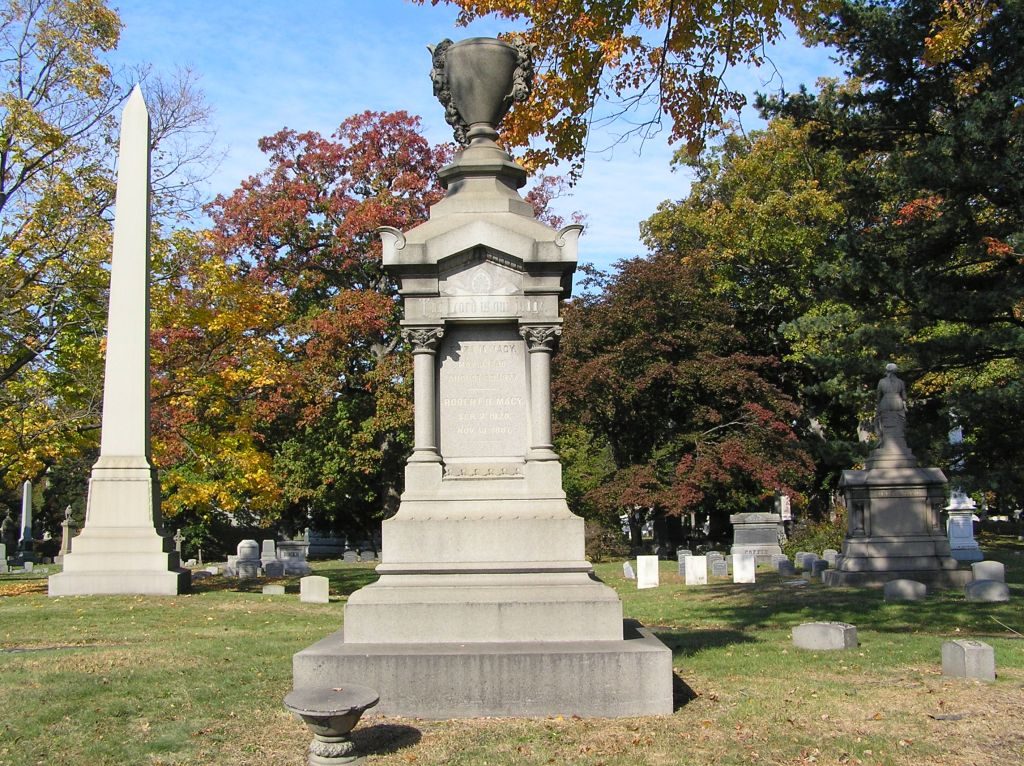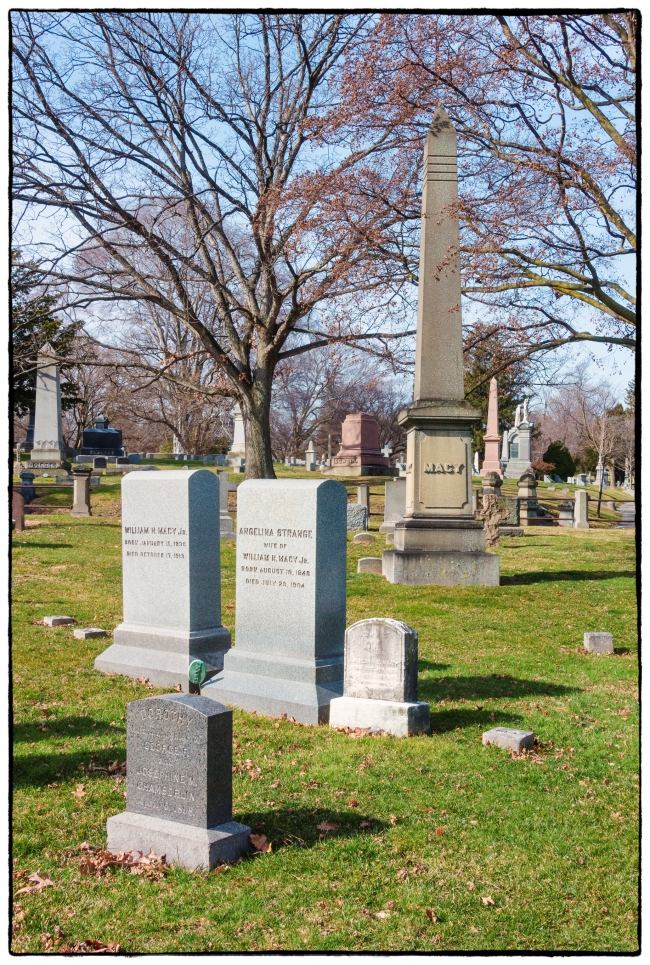I really messed this one up. When I saw the name on the obelisk and the name on it I thought: could it be that this is the final resting place of the famous department store magnate? Then I saw the name on the leftmost grave marker: “W.H. Macy”. I know that name I thought. This must be him. It isn’t much of a marker for such a well-known figure, but at least there’s an obelisk too.
And of course there IS a famous “W.H. Macy”: William H. Macy, the actor. Unfortunately (at least for me, probably not for him) he’s still very much alive and no relation at all to the department store family. The famous department store owner was in fact Rowland Hussey (R.H.) Macy and he’s buried on a different part of the plot and with a rather more impressive monument (see below)

R.H. Macy Monument at Woodlawn Cemetery in The Bronx
Source: R.H. Macy Monument at Woodlawn Cemetery in The Bronx by Anthony22 (CC BY-SA 3.0).
There is another famous Macy who is part of the department store family: George Nelson Macy. At the onset of the Civil Are he enlisted in the 20th Massachusetts Volunteer Infantry and was commissioned a 1st Lieutenant in command of Company I (He finished the war as a Major General). He fought in the battles of Ball’s Bluff, where he swam across the Potomac to find boats to rescue survivors. He also fought at Fredericksburg and at Gettysburg where he had a role in stopping Pickett’s Charge. A minié ball shattered his left hand and the arm had to be amputated. After he recovered he was fitted with an artificial arm and returned to action. In the fighting in the Battle of the Wilderness he was shot in both legs, but survived. His horse was shot at the Battle of Deep Bottom (Richmond) and fell on him. When the war was over he returned to Boston to become and officer of the Suffolk Savings Bank. Returning home he carried a small pistol in his vest pocket, suffered a dizzy spell and fell. The pistol went off sending a ball through his heart.

